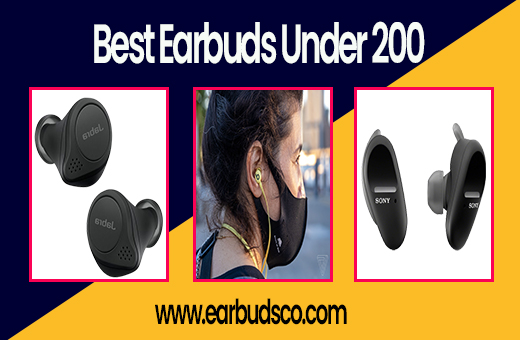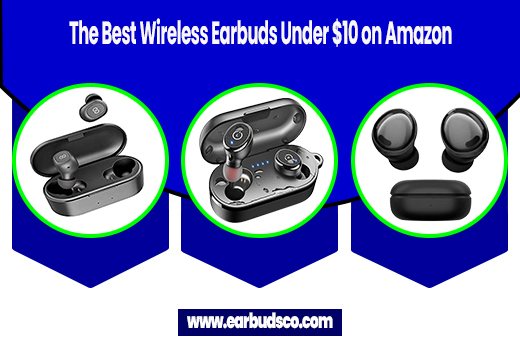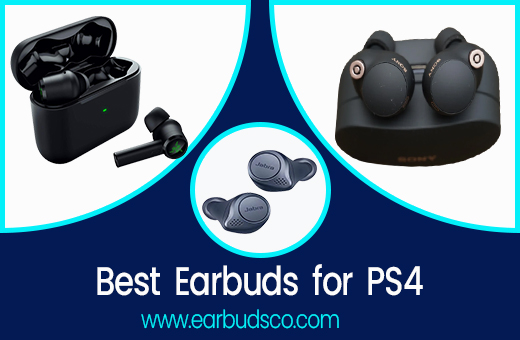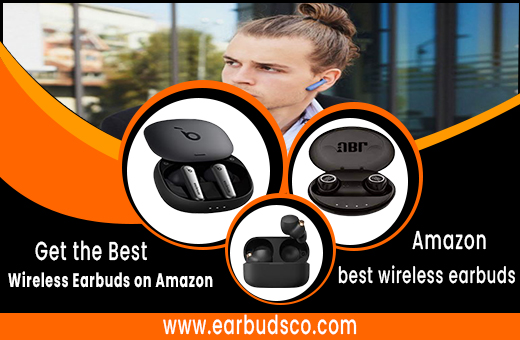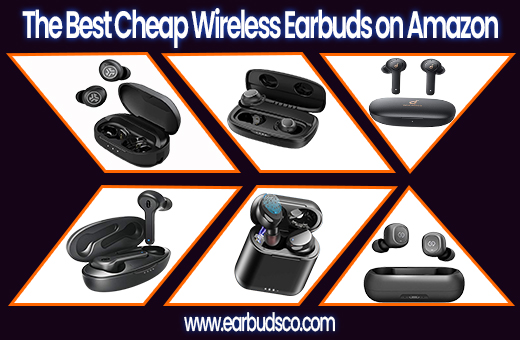Best earbuds for tiny ears
If you have small ears, the Best Earbuds for Tiny Ears comfortably and securely can be a challenge. Many earbuds are designed with a one-size-fits-all approach, which can make them uncomfortable or even painful for people with smaller ears. But fear not, we’ve researched and tested various earbuds to help you find the best earbuds for tiny ears that offer great sound quality and a comfortable fit.
SEO Meta Description: If you have small ears, finding comfortable earbuds with great sound quality can be a challenge. Read on to discover the best earbuds for tiny ears.
Introduction
Best Earbuds for Tiny Ears
If you have small ears, finding earbuds that fit comfortably can be a challenge. Most earbuds are designed to fit the average ear size, which can be too large and uncomfortable for individuals with tiny ears. In this article, we’ll be discussing the best earbuds for tiny ears and what factors you should consider before making a purchase.
In recent years, earbuds have become an essential accessory for music lovers and people on the go. They’re compact, convenient, and provide excellent sound quality. However, finding the perfect pair of earbuds can be a challenge, especially if you have small ears. Earbuds that are too big can fall out or cause discomfort, while earbuds that are too small can also cause discomfort and affect sound quality.
That’s why we’ve researched and tested various earbuds to help you find the best earbuds for tiny ears. Here are our top picks.
Best Earbuds for Tiny Ears: Our Top Picks
Apple AirPods Pro

Apple AirPods Pro is our top pick for the best earbuds for tiny ears. These earbuds are incredibly comfortable and come with three different sizes of silicone ear tips to ensure a perfect fit. The active noise cancellation feature blocks out background noise and provides an immersive listening experience. They’re also sweat and water-resistant, making them perfect for workouts.
Bose QuietComfort Earbuds

The Bose QuietComfort Earbuds are another excellent choice for people with small ears. These earbuds come with three sizes of ear tips, including a small size that’s perfect for tiny ears. They also feature active noise cancellation, which blocks out external noise, and the sound quality is exceptional.
Sony WF-1000XM4

The Sony WF-1000XM4 earbuds are a bit larger than some of the other options on this list, but they come with seven different sizes of ear tips, including a small size that’s perfect for people with tiny ears. They feature active noise cancellation, excellent sound quality, and long battery life.
Jabra Elite 85t

The Jabra Elite 85t earbuds come with three sizes of ear tips, including a small size that’s perfect for people with small ears. They feature active noise cancellation, excellent sound quality, and a customizable equalizer. They’re also sweat and water-resistant, making them perfect for workouts.
Beats Studio Buds

The Beats Studio Buds are another great option for people with small ears. They come with three sizes of ear tips, including a small size that’s perfect for tiny ears. They feature active noise cancellation, excellent sound quality, and a comfortable fit. They’re also sweat and water-resistant, making them ideal for workouts.
Tips for Finding the Perfect Fit
- Finding the perfect earbuds for tiny ears can be a challenge, but there are some tips that can help. Here are a few things to keep in mind:
- Look for earbuds that come with multiple sizes of ear tips. This will help you find the perfect fit for your ears.
- Consider earbuds with a wingtip or ear hook design. These can help keep the earbuds in place and prevent them from falling out.
- Look for earbuds with an adjustable EQ. This will allow you to customize the sound to your liking and make up for any shortcomings in the fit.
Consider earbuds
Earbuds are small, lightweight earphones that fit directly into the ear canal. They are a popular choice for listening to music, podcasts, and other audio content on the go due to their compact size and portability.
There are two main types of earbuds: wired and wireless. Wired earbuds connect to a device through a physical cable, while wireless earbuds use Bluetooth technology to connect to a device without any cables.
Earbuds are available in a range of styles and price points, from budget-friendly options to high-end models with advanced features such as noise-cancellation and touch controls. Some earbuds also come with additional features such as water resistance, voice assistant integration, and customizable sound profiles.
When using earbuds, it is important to practice safe listening habits to avoid damaging your hearing. This includes avoiding listening at high volumes for extended periods of time and taking breaks to give your ears a rest.
What are earbuds and why are they popular?
Earbuds are small, in-ear headphones that are designed to be lightweight and portable. They are popular because they are easy to use, convenient, and don’t take up much space. Earbuds are great for activities such as exercising, traveling, and working since they allow you to listen to music or take phone calls while still being aware of your surroundings.
Factors to consider when choosing earbuds for tiny ears

There are several factors to consider when choosing earbuds for tiny ears. Some of these factors include:
Earbud size
The size of the earbuds is one of the most important factors to consider. Earbuds that are too large can be uncomfortable and fall out of your ears, while earbuds that are too small can be ineffective at blocking out external noise. It’s important to choose earbuds that fit snugly in your ears without causing discomfort.
Earbud shape
Earbud shape is another important factor to consider. Some earbuds are designed to fit into the ear canal, while others are designed to rest on the outside of the ear. It’s important to choose earbuds that fit the shape of your ears.
Ear tip material
Ear tips are small pieces of silicone or foam that fit onto the end of the earbuds. The material of the ear tips can affect comfort and sound quality. Foam ear tips tend to be more comfortable and provide better noise isolation, while silicone ear tips tend to be more durable.
Earbud design
Earbud design is another important factor to consider. Some earbuds have a stem that sticks out of the ear, while others are more compact and sit flush with the ear. It’s important to choose earbuds that are comfortable and don’t get in the way of activities such as exercising.
Earbud connectivity
Earbud connectivity is another important factor to consider. Some earbuds use Bluetooth technology to connect to your device, while others use a wired connection. Bluetooth earbuds are more convenient and allow you to move around more freely, while wired earbuds tend to provide better sound quality.
Earbud sound quality
Sound quality is an important factor to consider when choosing earbuds. Some earbuds are designed for bass-heavy music, while others are designed for more balanced sound. It’s important to choose earbuds that provide the sound quality you prefer.
Earbud battery life
Earbuds’ battery life can vary depending on several factors, such as the brand and model of the earbuds, usage patterns, and settings. Generally speaking, most wireless earbuds have a battery life that ranges from 4 to 12 hours, while some high-end models can last up to 24 hours.
However, it’s important to note that the battery life specified by the manufacturer may not always reflect real-world usage. Factors such as the volume level, type of content being played, and whether noise-cancellation is enabled can all impact the actual battery life of the earbuds.
To get the most out of your earbud battery life, it’s recommended to fully charge them before use and to turn them off when not in use. Additionally, using a charging case can help extend the battery life of your earbuds, as the case can provide additional charges while on the go.
If you find that your earbuds are not holding a charge as well as they used to, it may be time to replace the battery or the earbuds themselves. Some manufacturers offer replacement batteries, while others may require you to purchase a new pair of earbuds.
Earbud controls
Earbuds can be controlled in a number of ways, depending on the model and features. Here are some common methods for controlling earbuds:
- Physical buttons: Many earbuds have physical buttons on the earpieces themselves that can be used to control various functions such as volume, play/pause, skipping tracks, and answering/ending phone calls.
- Touch controls: Some earbuds have touch-sensitive panels on the earpieces that can be used to control various functions. For example, tapping or swiping on the earpiece may allow you to adjust the volume, skip tracks, or activate a voice assistant.
- Voice commands: Some earbuds allow you to control functions using voice commands, such as asking a voice assistant to play a specific song or make a phone call.
- Mobile app: Some earbuds come with a mobile app that allows you to control various settings and features, such as adjusting the EQ, customizing touch controls, and checking battery life.
It’s important to refer to the instruction manual for your specific earbuds to learn how to control them properly. Additionally, some earbuds may have different controls depending on whether they are paired with an iOS or Android device.
Earbud durability
Earbuds’ durability can vary depending on several factors, such as the brand and model of the earbuds, the materials used in their construction, and how well they are cared for. Here are some tips for maximizing the durability of your earbuds:
- Handle them with care: Earbuds can be delicate, so it’s important to handle them with care. Avoid pulling or yanking on the cables, and don’t expose them to extreme temperatures or moisture.
- Store them properly: When not in use, store your earbuds in a protective case to prevent them from getting tangled or damaged.
- Clean them regularly: Use a soft, dry cloth to clean your earbuds regularly, and avoid using harsh chemicals or abrasive materials.
- Check the cables: If your earbuds have a wired connection, check the cables periodically for signs of wear or damage. If you notice any fraying or kinks in the cables, it may be time to replace them.
- Avoid overuse: Using your earbuds for long periods of time can put a strain on the cables and components, so it’s important to take breaks and give your ears a rest.
- Consider water resistance: If you plan to use your earbuds in wet environments, consider purchasing a pair that is water-resistant or waterproof.
Remember that even with proper care, earbuds may eventually wear out or stop working properly. If you notice any issues with your earbuds, contact the manufacturer or retailer for assistance.
Are smaller ear tips better?
Smaller ear tips are not necessarily better for everyone, as the ideal size and fit of ear tips will vary from person to person. In general, ear tips that are too small can lead to a poor fit, which can cause discomfort and even affect sound quality. On the other hand, ear tips that are too large can also be uncomfortable and may not provide a secure fit.
The ideal size of ear tips will depend on the size and shape of your ear canal. Some earbuds come with multiple sizes of ear tips to ensure a good fit, while others may offer custom fit options for a more personalized fit.
It’s important to find ear tips that are comfortable and provide a secure fit, as this can affect both the sound quality and the effectiveness of any noise-canceling features. If you’re not sure which size of ear tips to use, try out different sizes to find the ones that provide the most comfortable and secure fit.
What to do if earbuds are too big?
If earbuds are too big, they may be uncomfortable or even painful to wear, and may not provide a secure fit, which can affect sound quality. Here are some steps you can take if your earbuds are too big:
- Try different ear tip sizes: Many earbuds come with multiple sizes of ear tips to ensure a good fit. Try out different sizes to find the ones that provide the most comfortable and secure fit.
- Use foam ear tips: Foam ear tips can conform to the shape of your ear canal, providing a more secure and comfortable fit. Some earbud manufacturers offer foam ear tips as an alternative to silicone ear tips.
- Consider using earbud wings: Earbud wings are small attachments that can be added to earbuds to provide a more secure fit. They wrap around the earbud and sit in the ear’s concha, providing extra support and stability.
- Consider custom fit options: Some earbud manufacturers offer custom fit options, which involve creating a mold of your ear canal to ensure a personalized fit. This may be a good option for those with particularly small or narrow ear canals.
If none of these steps work, it may be necessary to consider alternative options such as headphones that rest on the ear or over-ear headphones. It’s important to find earbuds or headphones that are comfortable and provide a secure fit to ensure the best sound quality and listening experience.
Ears too small for earbuds
If you have ears that are too small for earbuds, you may find that they don’t fit properly or are uncomfortable to wear. Here are some steps you can take:
- Try different ear tip sizes: Many earbuds come with multiple sizes of ear tips to ensure a good fit. Try out different sizes to find the ones that provide the most comfortable and secure fit. Some earbuds also come with different shapes of ear tips, such as oval-shaped ear tips, which may be more comfortable for some people.
- Use foam ear tips: Foam ear tips can conform to the shape of your ear canal, providing a more secure and comfortable fit. Some earbud manufacturers offer foam ear tips as an alternative to silicone ear tips.
- Consider earbud wings: Earbud wings are small attachments that can be added to earbuds to provide a more secure fit. They wrap around the earbud and sit in the ear’s concha, providing extra support and stability.
- Consider custom fit options: Some earbud manufacturers offer custom fit options, which involve creating a mold of your ear canal to ensure a personalized fit. This may be a good option for those with particularly small or narrow ear canals.
- Consider alternative options: If none of these steps work, it may be necessary to consider alternative options such as headphones that rest on the ear or over-ear headphones. These may provide a more comfortable fit for those with smaller ears.
It’s important to find earbuds or headphones that are comfortable and provide a secure fit to ensure the best sound quality and listening experience. If you’re having trouble finding earbuds that fit properly, it may be worth trying out different options until you find the ones that work best for you.

